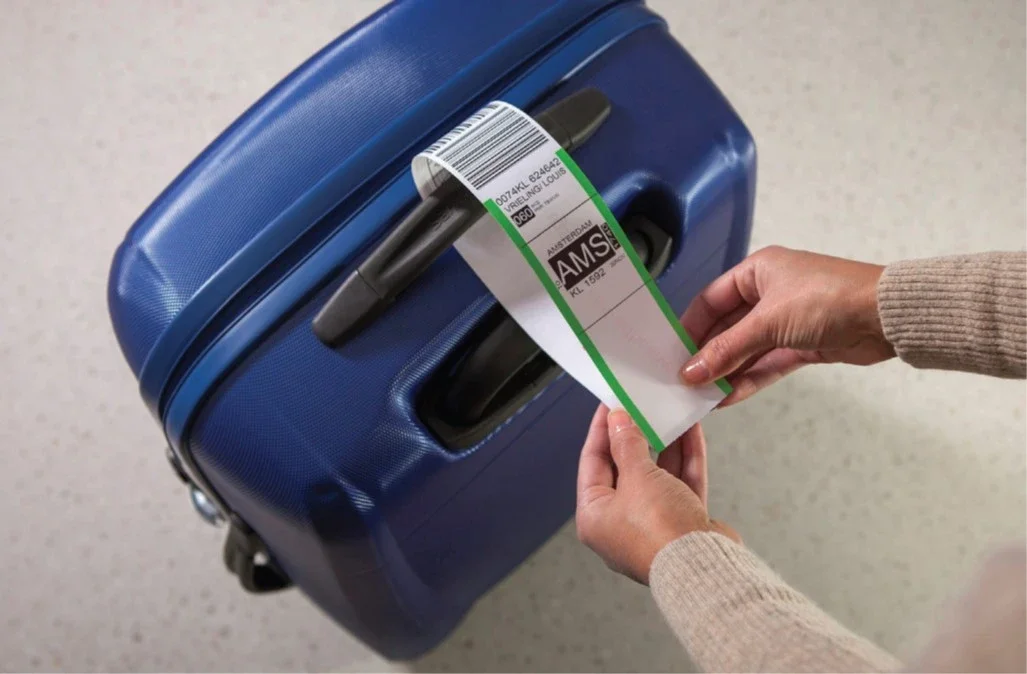Airports face increasing pressure to optimise their processes as traveller numbers continue to surge; the International Air Transport Association (IATA) predicts that 7.2 billion passengers will travel by air in 2035. In the face of this figure, obvious answers are no longer enough.
"You cannot keep up with the growth figures just by building new terminals," says Borry Vrieling, founder and managing director of self-service labelling company eezeetags. "You need to look at your operations in a different way."
One solution is a move to self-service. At the bag-drop point, self-service units allow passengers to print and affix hold bag labels themselves, thus speeding up progression. Bag-drop units take up less space than traditional agentoperated desks, meaning more can be placed on the same conveyor belt while reducing queuing.
However, this can be a confusing and stressful process. Traditional bag tags were designed decades ago for application by trained agents who remove a section of liner. There is, therefore, plenty of scope for an inexperienced traveller to stick the tag to luggage in the wrong way, obscuring barcodes. Working out how to use the tags wastes time and puts pressure on passengers; this is amplified by a fear that a misapplied label will lead to the bag not arriving at its destination.
Reinvent the tag
The unsuitability of the existing tags for self-service was not lost on Vrieling. "I'm a label professional, I've been in the label industry since I was 21 years old, and I was confronted with self-service bag drop at one point and it really took me a while to figure out how it worked," he says. "That's how I came to start eezeetags."
Instead, eezeetags feature two red dots of innovative adhesive that will only attach to each other. "Our product will not stick to anything but to itself, so although you might try to tag it in the wrong way – let's say you put the back side of the tag on to the front, making a loop – it will not stick," Vrieling explains.
A single language-neutral illustration instructs passengers to join the dots together. The process is made simpler by the fact that there is no adhesive liner to remove, which also results in less waste for an airport.
Maximum efficiency
This easy process has a significant benefit for passenger throughput. Travellers are able to tag their luggage an average of 20 seconds faster with eezeetags than a standard bag tag, reducing crowding and moving passengers smoothly on to the next stage of their journey. The benefits of an easy self-service procedure also go beyond time saving, as airports need to combine greater efficiency – which often means self-service – with good customer experience.
"Although you have not talked to a human being, you feel that you have had great service, because you have a benefit," Vrieling adds. With so much choice between airports in Europe, this is increasingly important; passengers will choose to travel from the airport that offers a smooth, stress-free journey.
"Airports and airlines are not looking for products, they're looking for benefits," Vrieling concludes. "They are looking to improve their operations."
As eezeetags continues to refine its bag tag and reduce costs, its technology offers a way for airports to deal with increased volume while maintaining service standards.


